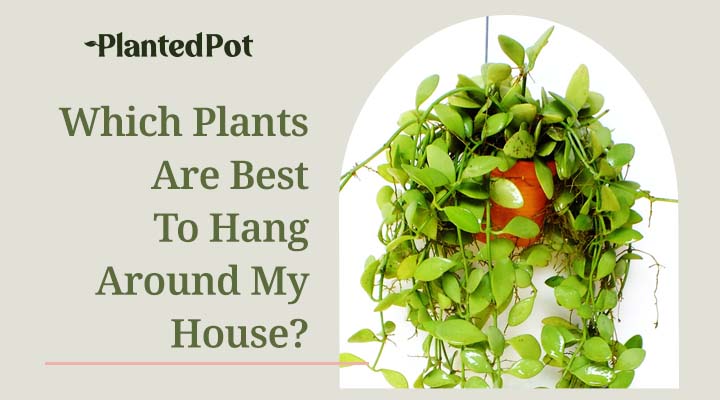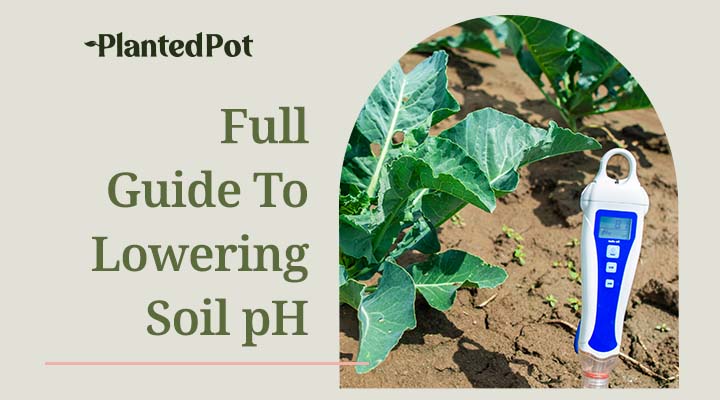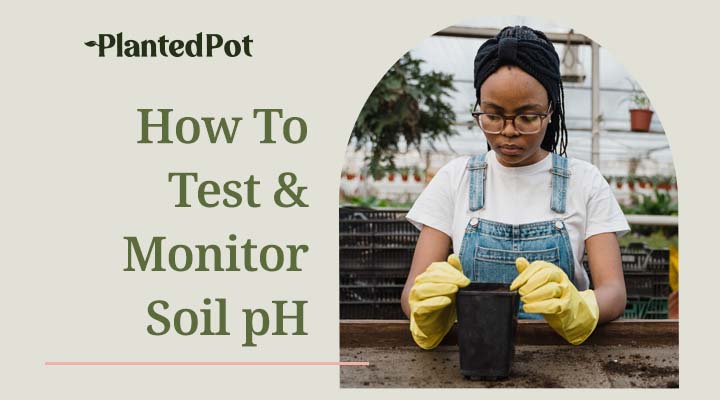
Indoor Plants For Beginners: 9 Easy Plants You’ll Love
Home / Indoor Plants For Beginners: 9 Easy Plants You’ll Love
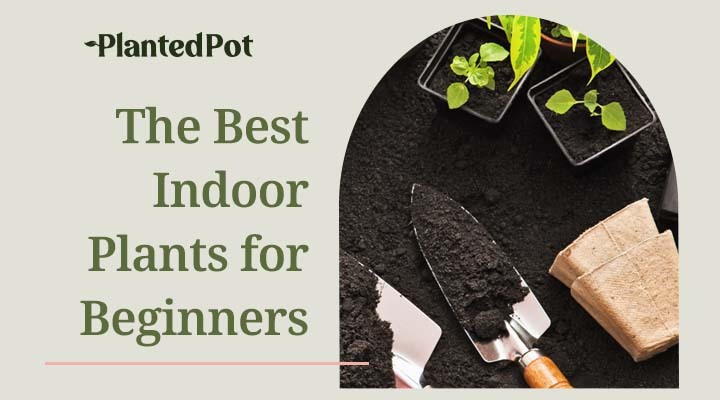
Indoor Plants For Beginners: 9 Easy Plants You’ll Love
- Olivia Richman
- June 4, 2021
- 1:38 pm
- No Comments
It can be a little intimidating to buy an indoor plant if you’re new to gardening. How do you make sure you keep the plant alive? How much work will it be? Luckily there are indoor plants for beginners that are easier to take care of and don’t require as much plant knowledge.
What Are Indoor Plants?
Indoor plants are exactly what you think! They are plants that thrive while being grown indoors. There are certain plants that do better indoors than others. They are more adaptable and versatile than more picky plants and are able to handle changes more than more sensitive plants.
Indoor plants can be put in hanging baskets, pots, and containers. They can be placed just about anywhere in your home, including the office, bedroom, bathroom, or kitchen. Just keep in mind each individual plant’s requirements before placing them in a certain area. Some plants require more light than others.
What Are the Benefits of Indoor Plants?
The most obvious benefit of an indoor plant is its appearance. Most people enjoy adding plants to their decor because they add a pop of color and nature to any room. Indoor plants come in a variety of looks, from spiky and bold to lacy and elegant. There is sure to be a plant that matches your specific style and vibe.
Studies have also proven that having plants around can improve your mood. A lot of people keep their plants in the office or living room study to inspire creativity and a clear mind. Having a touch of green inside will make you feel more positive.
Plants are also excellent air purifiers. NASA research proved that having an abundance of plants in the home can significantly improve air quality by reducing contaminants and harmful elements in the air. There are also certain indoor plants that are kept in the bedroom because they perform photosynthesis at night.
Are Indoor Plants Good for Beginners?
A lot of times, indoor plants are easier to manage than plants that go in a garden in your yard. That’s because it’s easier to control the environment in your home, whereas you never know if it will become cold or rain or windy outside.
Of course, not every plant is right for beginners. There are some more complex and picky plants that need very specific care or they might become unhealthy. That’s why it’s important to start with hardier plants that don’t require as much care.
Are Indoor Plants Easy to Grow?
If you have a black thumb, it might be nerve-wracking to pick out a plant. What if the leaves start falling off? What if it becomes too dry and starts to wilt? Will I kill it?!
Not all indoor plants are easy to grow. They all have different requirements when it comes to watering, soil, heat, temperature, humidity, and lighting. Some plants are pickier and trickier than others. Some take very little plant care and will thrive when the care is less than ideal. Others will die even if you move them to a different room.
If you’re new to owning plants, always pick a low maintenance variety, like a succulent or fern. There are certain plants that are known for their hardiness. These are the best indoor plants for beginners! You don’t have to worry about killing as long as you try your best.
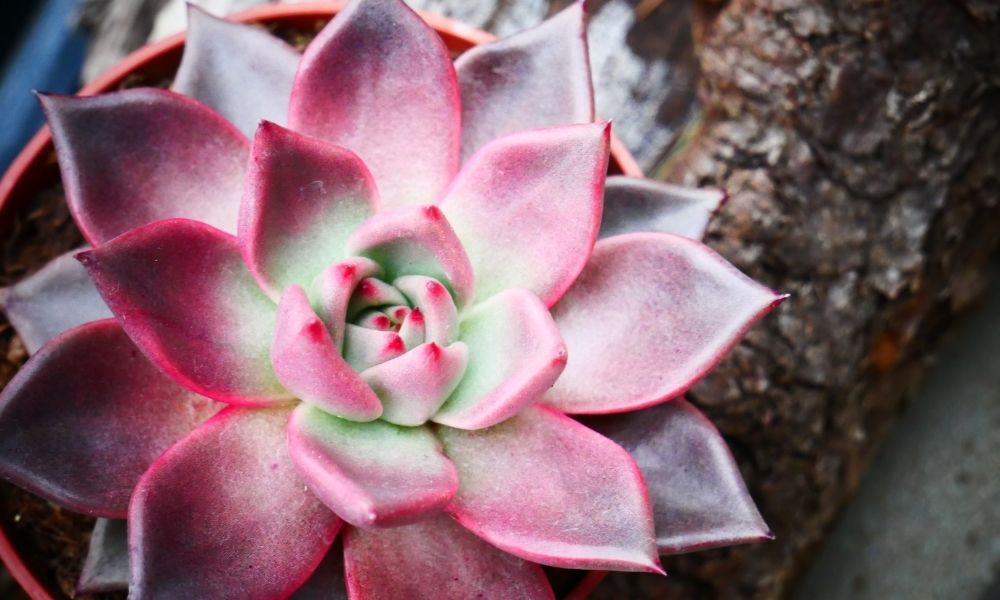
Best Indoor Plants for Beginners
Some plants will simply shrug off dry soil. Others will stay green despite the lack of light. These are hardy plants that are easy for beginners to take care of without added stress. Here are some of the most low maintenance plants out there that thrive in most indoor environments no matter how new you are to gardening and plant care!
Snake Plant
You will always see this bold and aesthetically pleasing plant in lists like these because the Snake Plant is known for its versatility and hardiness. Snake Plants thrive in most home environments since they enjoy the same temperature and humidity as us.
This slow-growing plant will not need to be repotted too often. Place them in indirect light and water regularly, allowing the soil to dry well between watering. Make sure the soil is well-draining. Wherever you choose to place the Snake Plant, keep in mind that this plant is toxic to pets.
Spider Plant
The Spider Plant doesn’t need a lot of care. It’s a low-maintenance plant that essentially needs bright, indirect light, regular watering, and basic potting soil.
The Spider Plant is great for beginners because they are good at telling you what changes they need. If they need water, you’ll notice their leaf tips getting brown. If they are getting too much water, their long leaves will be floppy. Too much sun? They will get lighter. Too dark? No stripes at all.
A happy Spider Plant will produce mini versions of themselves known as “spiderettes.” These can be transplanted quite easily, allowing you to make even more plants. Give them to someone else who is new to indoor gardening!
Money Plant
Looking to add some luck and beauty to your home? The Money Plant is low maintenance, only needing weekly watering and a bit of light. Besides minimal care, this plant can take care of itself.
And just like the Spider Plant, this plant produces offshoots at the base of the stem which means more plants! Add them in soil and you’ll have even more Money Plants, no effort required.
Prayer Plant
This is a beautiful, tropical plant that looks great in any room — but it’s right at home in your bathroom! With low light and high humidity, keeping your Prayer Plant in the bathroom keeps it effortlessly healthy and happy.
Make sure you water your Prayer Plant weekly. The soil should be quite dry between waterings. Their soil should be well-draining. Keep them in medium, indirect light or even low light. This isn’t a plant that needs a lot of watering.
Related: Prayer Plant Care: Easy Guide for Growing Exotic Plants
Peace Lily
This is a very expressive plant that will show you exactly what it needs. Floppy leaves mean they are getting too much or too little water. Touch the top of the soil to figure out which one! If their leaves get brown edges or curl, that means it’s been too long between watering.
Peace Lillies don’t need a lot of watering and will suffer from soggy soil. Make sure the soil is well-draining. Sometimes people use a blend of peat moss and sand. Keep them in medium, indirect light away from pets. This plant is not cat and dog-friendly.
Aloe Vera
This useful plant provides a lot of benefits for very little care. All this striking and beautiful plant needs is bright, indirect light, dry soil between watering, and sandy soil that drains well.
While Aloe Vera plants are toxic to dogs and cats, this plant is very useful for people. Clip off a piece of the plant’s stalk and it can be used to treat a burn or cool a sunburn. Aloe Vera also makes for a very nice moisturizer, keeping your skin healthy.
Boston Fern
Boston Ferns are a very chill, low-maintenance plant that can thrive even with a beginning gardener. Just provide it with moderate, indirect light, regular watering (keeping the soil damp), and well-draining potting soil. One thing to keep in mind about the Boston Fern is to spritz it every week or so. This is a plant that thrives in humid, moist environments. Homes are not usually moist enough to resemble this environment.
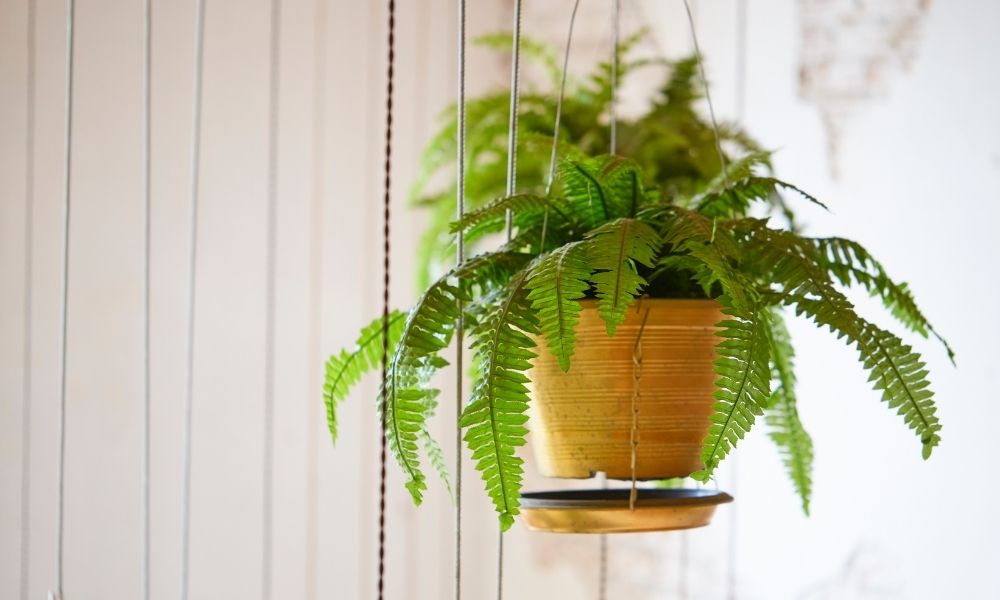
Monstera Deliciosa
Also known as the Swiss Cheese Plant, you might be surprised to see this exotic beauty on the list. It has giant leaves with an astonishing hole pattern throughout and it can grow up to 15 feet tall! But despite its tropic appearance, the Monstera Deliciosa is an easy-going tropical plant that beginners can enjoy.
This climbing plant needs moderate indirect light, regular watering, and good draining potting soil. Attach it to a trellis or piece of furniture to allow it to climb properly. The important thing to remember is that this plant is toxic to pets so it may not be best for homes with cats and dogs.
Jade Plant
The Jade Plant is a succulent, which means it’s pretty chill to take care of overall. Jade plants are one of the best indoor plants for beginners because they look super impressive, but you don’t need to put in much work.
A Jade Plant needs plenty of light, regular watering, potting soil mixed with sand, and a good trimming. This is a fast-growing plant that requires a good pair of gardening shears (to be used in spring). Keep this bold tree-like plant away from pets.
How Do I Know Which Indoor Plant is Best for Me?
While all of the above plants are perfect for most beginners, there are certain plants that will work better for you depending on a variety of factors. Here are some to keep in mind when choosing your first plants.
- Where You Live: Some regions are hotter than others. Some are cold. Keep in mind what temperatures certain plants require. It may be a bit expensive to heat up your home to keep some tropical plants happy if you live in a place that gets cold in the winter.
- Your Living Space Itself: Do you live in a small apartment or a large house? Depending on how much room you have, you might want to pick a plant that’s a bit smaller. Some plants can grow pretty big and might end up taking up too much room!
- Your Lighting: Some apartments don’t have a lot of windows. That isn’t good for plants that require a lot of natural light.
- Your Family: There are some plants that are considered toxic to people and pets. If you have a small child, a cat, or dog, you might want to avoid plants that can make them sick. While you can try to keep them in off-limit rooms, it may not be worth the risk.
- Your Schedule: While most beginner indoor plants don’t require a lot of care, keep in mind how much time you can dedicate to taking care of a plant. Some plants need more watering than others, meaning you will need to spend a bit more time filtering water and testing their soil’s moisture.
Final Thoughts – Indoor Plants for Beginners
Whether you live in a spacious, open loft or a stuffy, cozy one-bedroom home, there is a beginning plant out there for you! There is an abundance of plants that are easy to care for and are very hardy, meaning it won’t die if you make a few mistakes. Beginner plants come in a variety of looks, meaning you will find one that matches your aesthetic and needs! Just make sure you know exactly what it needs when it comes to watering, soil, and temperature.


